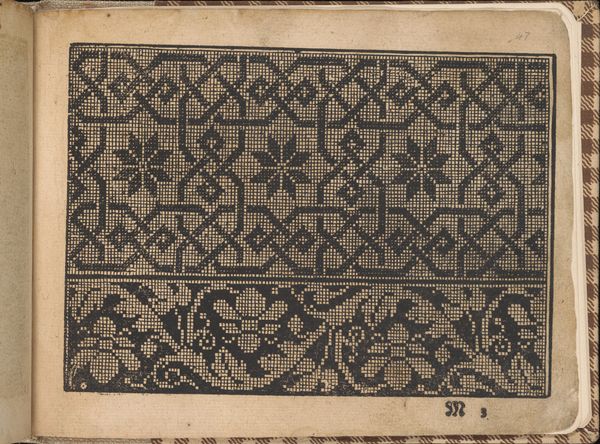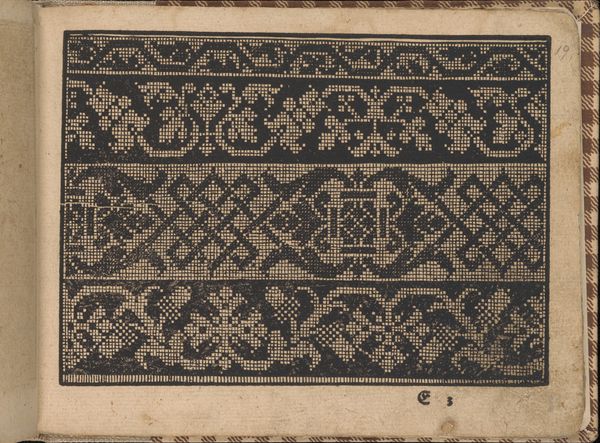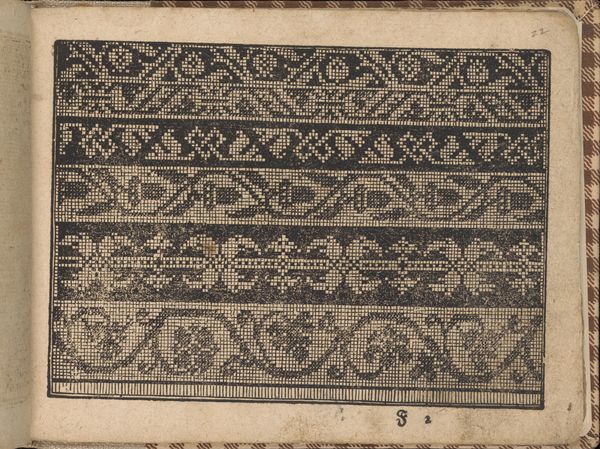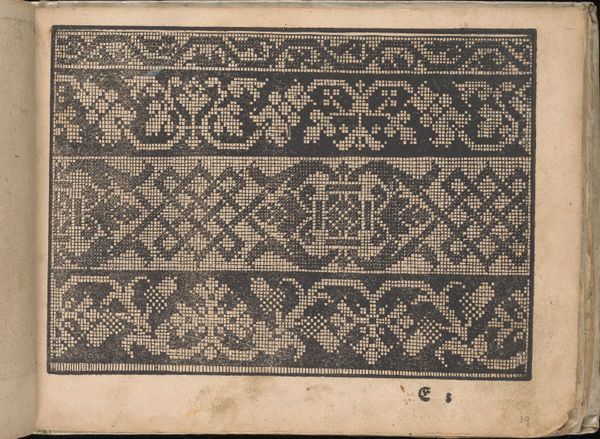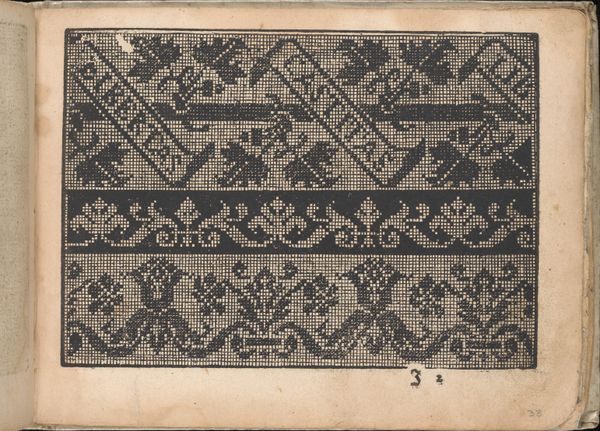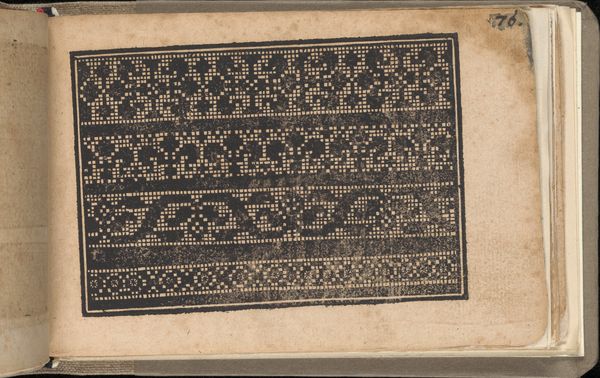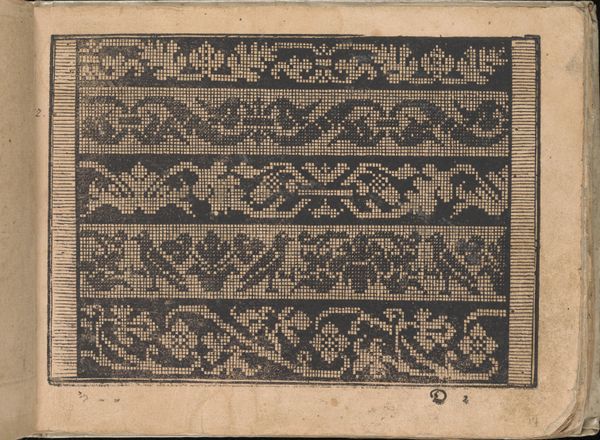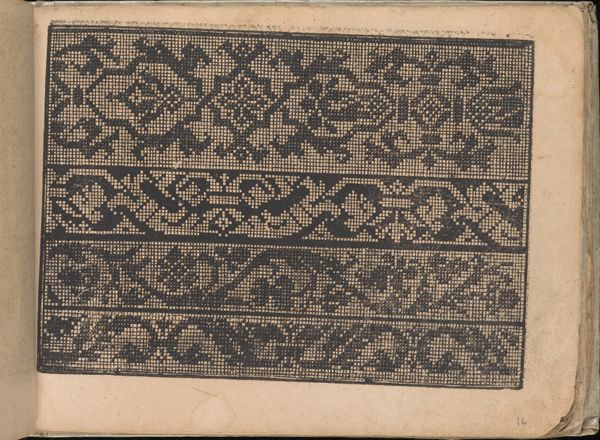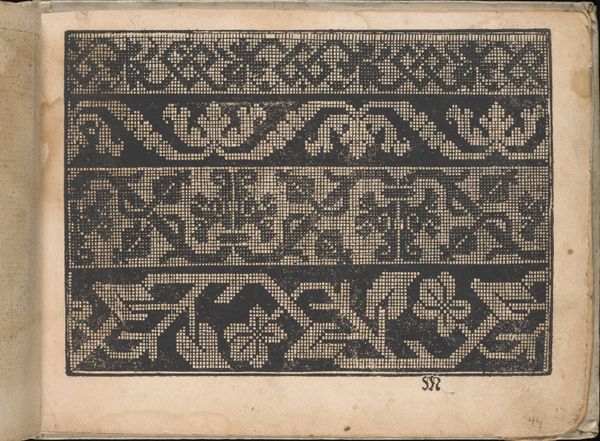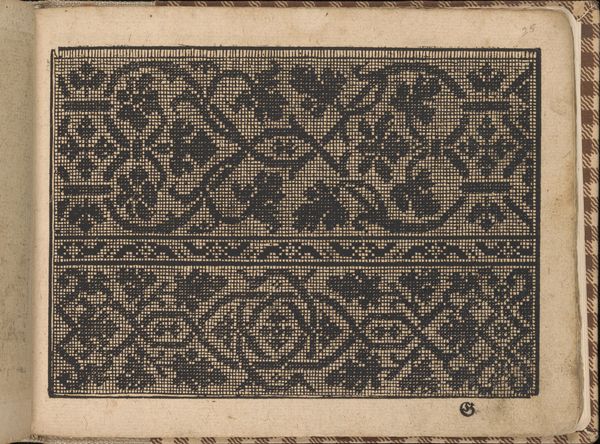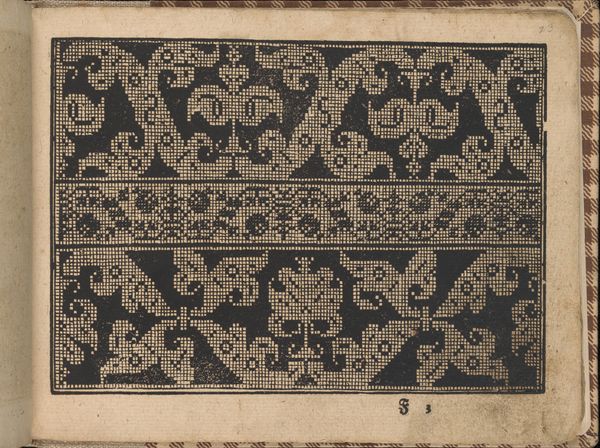
drawing, ornament, print, paper, woodcut
#
drawing
#
ornament
#
medieval
# print
#
paper
#
woodcut
#
calligraphy
Dimensions: Overall: 6 5/16 x 8 1/4 in. (16 x 21 cm)
Copyright: Public Domain
Curator: Here we have a page from Bernhard Jobin’s "New Künstlichs Modelbuch," created around 1600. It’s a woodcut print on paper. It strikes me as being so carefully rendered. What's your initial impression? Editor: My immediate thought is textile patterns; maybe it’s the crisp, almost pixelated forms. There's a certain elegance to the repetition, despite the fairly restricted palette. Curator: It’s an interesting point. As a Modelbuch, it’s explicitly linked to craft; serving as a pattern book for embroidery or needlework. We are looking at the material conditions of making. It was meant to be a guide, offering visual instruction and a means of production. The woodcut, a relatively accessible medium, would allow these designs to be widely disseminated and copied. Editor: That speaks volumes about its impact. These symbols — flowers, vines — aren’t simply decorative. They reflect a specific cultural lexicon and understanding. Imagine the maker pouring over this image, internalizing these patterns! There's a very clear visual language. Each choice conveys something about status and belief, I think. Curator: Agreed. The act of copying these patterns implies engagement, but also some level of standardization of taste. The visual power resides, as well, in the mass reproduction facilitated by printmaking. The designs are also organized, modular—a sign of rationalization impacting labor even at the turn of the 17th Century. Editor: Mass reproduction indeed alters our connection. While retaining the beauty and integrity of individual craftsmanship, it suggests continuity and the collective cultural narrative it builds. I find it particularly fascinating how seemingly simple floral motifs still possess a surprising richness. Curator: Yes, this interplay is central. From the detailed cutting of the woodblock to the subsequent printing and use, each stage provides an insight into late medieval production practices. The consumption of ornament speaks to that historical time as well. Editor: Examining the page brings an unexpected appreciation of the stories these small symbolic elements can tell and their lasting impact across generations of craft makers. Curator: Absolutely, analyzing this print through its materials and historical use really highlights the link between artistic vision and practical creation.
Comments
No comments
Be the first to comment and join the conversation on the ultimate creative platform.
